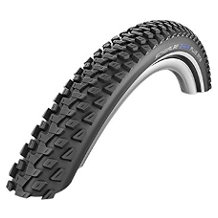Bike light purchasing advice: how to choose the right product
- The most important facts in brief
- Full bike lights improve visibility and increase your own visibility.
- A dynamo provides reliable power, but is not useful on all bicycles.
- Battery lights can be used flexibly, but need to be charged regularly.
- LED lights are standard on modern bike lights.
Well lit is safe on the road
Being visible in road traffic plays an important role not only in the dark season. Functioning bike lights are relevant all year round and are also required by law. However, according to the Allgemeiner Deutscher Fahrradclub (German Bicycle Club), around 40 percent of bicycles in Germany have no or insufficient lighting. A good lighting system is indispensable for anyone who wants to use their bicycle in the dark. It protects against accidents, which can be serious, because lighting improves your own visibility as well as the visibility of other road users. In this way, it contributes to a safe and relaxed ride.
Since 2013, the lighting no longer has to be permanently attached to the bicycle, which is why there is no obligation to have a dynamo. Other lighting systems can now be used without the risk of collecting a parking ticket. Many clip-on LED lights are much more powerful than dynamo-powered lights. The abolition of the rule suits mountain bikers and racing cyclists in particular, as dynamos cannot be sensibly fitted to these bikes.
Lights on – the types of bike light
Cyclists have a choice between two types of power supply: power generation by a dynamo on the one hand and power supply by batteries or rechargeable batteries on the other.
Dynamo-powered light: ideal for commuters and frequent cyclists
Until a few years ago, a dynamo-powered light system permanently installed on a bicycle was mandatory. Almost all city and trekking bikes still have such lighting. However, the classic side-rotor dynamo, which produces a quiet whine and noticeable friction while riding, has all but had its day. It has been replaced by the hub dynamo, which replaces the conventional hub of the front wheel. It has a significantly higher efficiency than the side-rotor model, causes noticeably less frictional resistance and runs smoothly even in wet and snowy conditions. An LED light combined with a hub dynamo guarantees both good visibility and visibility in road traffic.
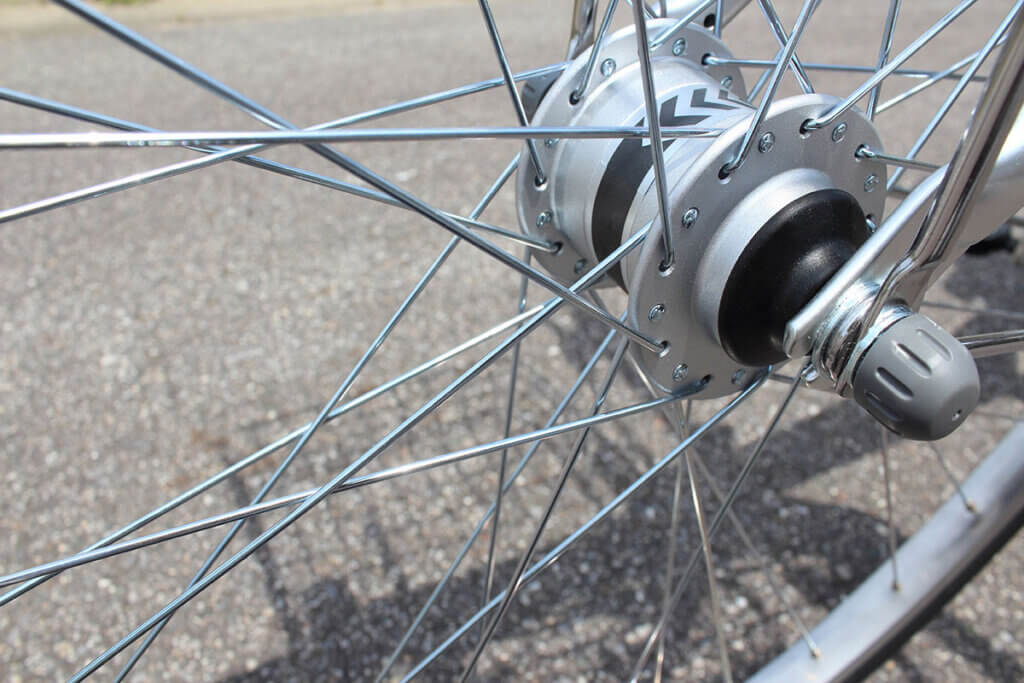
The disadvantage of fixed lighting with a dynamo is the cable system. It runs along the bicycle frame and is susceptible to damage in certain areas. This damage can easily lead to loose contacts. The contact points, plug connections, soldered joints and other connection points are also susceptible to damage. If the bicycle is permanently parked outdoors, a dynamo-operated light system can be maintenance-intensive. The search for the cause is usually done in the mornings or evenings, which also costs nerves.
Advantages
- Lighting always with you
- Independent of other power sources
- Theft-proof
Disadvantages
- Costly repair in case of defect
- Cables susceptible to damage
- Frictional resistance
Battery and accumulator lighting: Flexible use
A dynamo system does not make sense for every bicycle. For sporty bikes such as mountain bikes and racing bikes, battery- and accumulator-powered lighting systems without cables are the better solution. The new standard is bright LEDs. Modern LED systems have a permanently installed lithium-ion battery that is charged via USB. Users have to take care of the charging status of the lighting themselves. In contrast to dynamo systems, battery lighting is not always ready for use. Cyclists who have missed charging are then left in the dark and have to push.
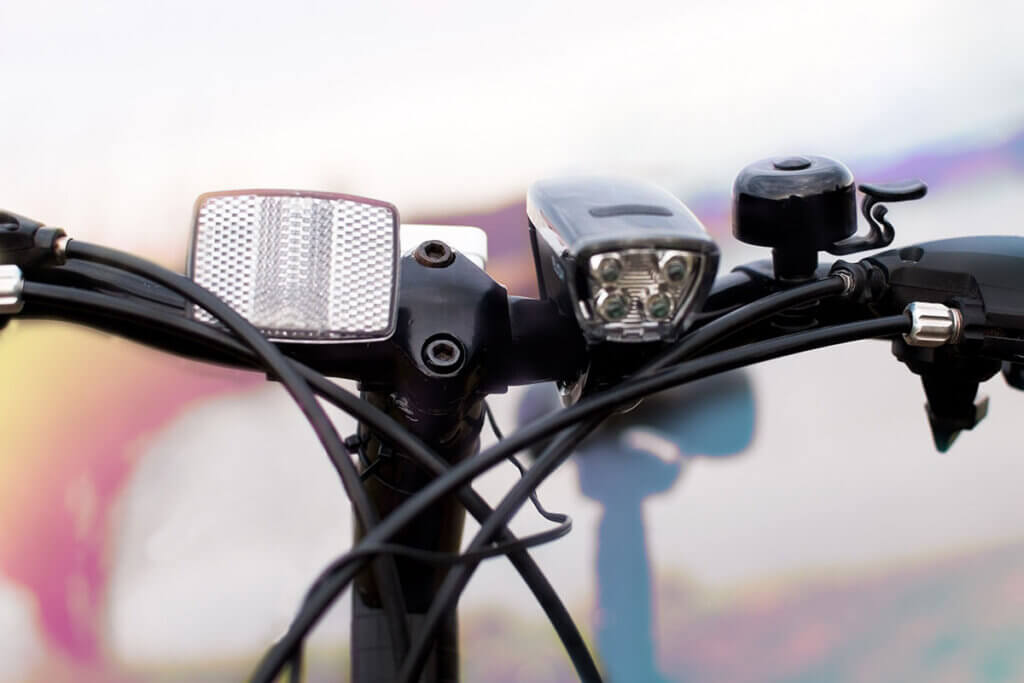
Rechargeable and battery lights are attached to the handlebar, seat post or frame using a bracket. Common mounting systems are elastic tension straps, screwed-on brackets or hinge systems with ratchet clamps. After the ride, the light is removed again and is thus only exposed to the weather for a short time. However, the practical brackets are the biggest weak point of mobile lights. They have to hold the light firmly in place even when subjected to vibrations. Many brackets fail in this aspect, so that the lamp wobbles while driving and, in the worst case, falls off. With detachable lights, users must also always prevent theft. If you park your bike in busy places without removing the lights, you will quickly lose them again. Many cyclists forget the battery or rechargeable light at home, even though they have to return home in the dark. The way home must then be made on foot.
Advantages
- Retrofittable
- Low weight
- Inexpensive
Disadvantages
- Regular charging required
- Susceptible to shocks
- Not theft-proof
What to look for when buying bike lights
The more visible a cyclist is in road traffic, the better he is perceived by other road users. A complete and functional bike light is essential for this.
Choice of light source
Basically, you can choose between incandescent bulbs, halogen and LEDs. If you are looking for maximum visibility, there is no getting around an LED light. LEDs perform better in all aspects than the other light sources. Incandescent bulbs are also completely outdated. LEDs not only shine much brighter, they are also many times more durable. While their operating time can be up to 100,000 hours, conventional halogen lamps last only about 3,000 hours. However, the actual burning time depends on individual use. Another advantage of LEDs is their low energy consumption. Compared to halogen lights, it is therefore less often necessary to change the batteries or charge the rechargeable battery.
You have old lamps at home and don’t know what to do with them? Here we tell you how to dispose of them properly.
Brightness and light pattern
Brightness is the most important criterion when buying a bicycle light. The decisive factor is the light pattern that a lamp produces. The cone of light must illuminate the road in such a way that it is possible to ride with foresight. Manufacturers specify the units lux or lumen for the brightness of their bicycle lights. For both, the higher the value, the better. But what exactly do lux and lumen mean?
Lux is the most common manufacturer’s indication of lighting quality. The value expresses the light intensity, i.e. how much light reaches a surface to be illuminated. Since the light intensity is measured in the centre of a light cone – i.e. at the brightest point – the unit lux says nothing about the size of the illuminated area. A laser pointer, for example, has a very high lux value, but is completely unsuitable as bike light. The cone of light produced must be wide enough to illuminate the road and the edge of the road evenly.
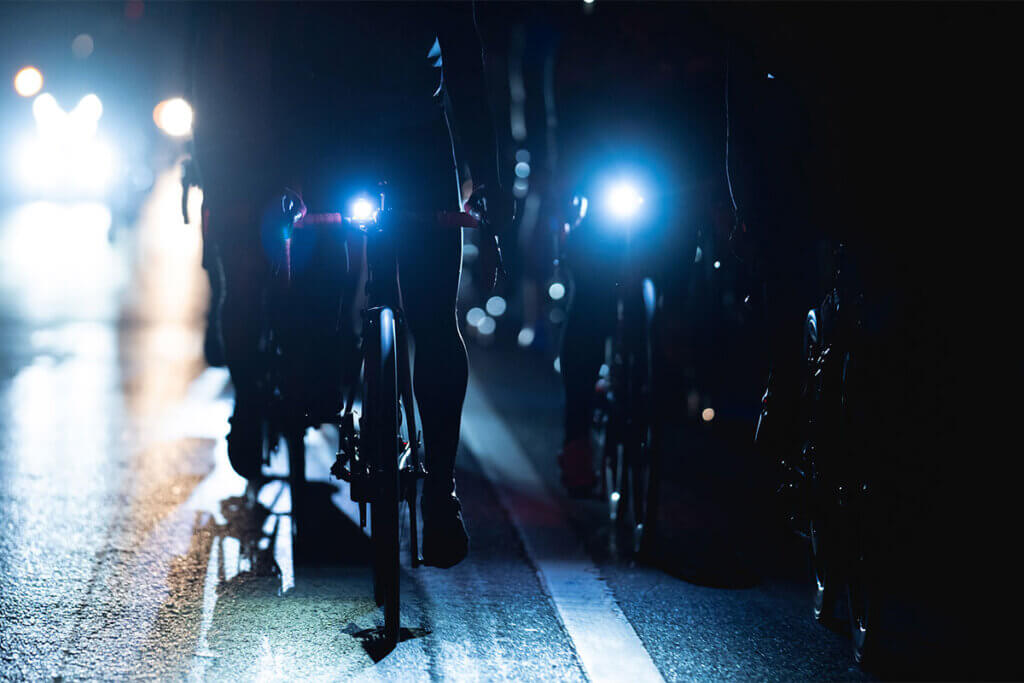
Commercially available bicycle lamps usually have between 10 and 100 lux. 10 lux is the prescribed minimum value. In a well-lit environment such as the city, 10 lux is sufficient. Better visibility is provided by lamps with a luminous intensity of 30 lux and more. In the meantime, there are bicycle lights that provide far more than 100 lux. These are correspondingly more expensive and their use does not make sense in every environment. They are best used on poorly lit routes, for example when riding overland.
The unit lumen is used less frequently in specifications than lux. Lumen refers to the total light emitted, regardless of how it is distributed. A bright light therefore has a high lumen value, but this does not describe how intensively the light radiates in a particular direction. The light could shine in all directions instead of forward, which is not desirable for a bicycle lamp. As a rule, a value of 300 to 1,000 lumens is sufficient.
In practice, all approved bicycle lights produce a cone of light directed forwards. Based on the lux and lumen values, cyclists can get an idea of the light’s properties. It is important that a bicycle light produces a uniform, wide field of light. This is easiest to determine by trial and error. If this is not possible, many manufacturers show pictures of the light field on their product pages.
Running time
This criterion only applies to battery- and accumulator-powered bicycle lights. A bright light is not much use if it has an operating time of only a few hours. A runtime of four hours is the minimum; if it is less, you should refrain from buying it. High-quality front lights have a burn time of up to ten hours, smaller rear lights shine for a few hours longer. Most lamps have an eco mode. With this setting, the power and thus the power consumption can be gradually reduced. The remaining capacity of rechargeable batteries and batteries should be displayed in a meaningful way – after all, no one likes to be left in the dark unexpectedly.
With detachable lighting, cyclists must regularly charge the battery or keep batteries on hand. Especially for frequent cyclists, this can be a nuisance and lead to annoying situations. If you forget to recharge the night before, you will be in the dark the next morning. Dynamo-powered lights are more commuter-friendly in this aspect.
Durability of the lamp
Bicycle lights are used outdoors and must therefore withstand all kinds of environmental influences. Anyone can get caught in a heavy rain on the way to work. Detachable lights fall to the ground from time to time when mounted. So a good light is both weatherproof and shockproof. The IP or IK standard tells you whether this is the case. IP 68 indicates that the lamp is both dust and water resistant. In terms of impact resistance, the highest protection class is IK 10.
Rear light
Many front lights are available in sets together with a rear light. The red rear light is exclusively for your own visibility in road traffic and is mandatory as part of the bike light. When buying a rear light, the same criteria should be taken into account as for the front light. The most important thing is that the rear light is highly visible. In the case of rechargeable and battery lights, the operating time is also important. Other relevant aspects are the type of mounting and weather resistance.
Other features
Many bicycle lights have different operating modes with brightness gradations. In this way, the lighting can be adapted to the surroundings. After all, less light is needed in the city under street lamps than on a forest path, for example.
A daytime running light does not support a cyclist’s vision, but makes him or her more visible. The light cone of a correctly adjusted headlight is directed downwards. The daytime running light improves visibility by emitting light towards the front. LED front lamps with daytime running light contain additional, weaker LEDs for this purpose, which do not dazzle oncoming traffic. The brightness of the daytime running light is automatically adjusted by means of a sensor.
With detachable battery and accumulator lights, the quality of the mounting is crucial. In terms of theft protection, the light should be easy to detach from the bracket and put back on again, and at the same time the mounting must provide a secure hold while riding. A good mount is simple in design, but stable and can be mounted on the bike in just a few steps. The most suitable mounts are those that are screwed to the bike or have a snap lock. This way the light always sits in the same position. Elastic mounts with rubber parts are more flexible, but often slip.
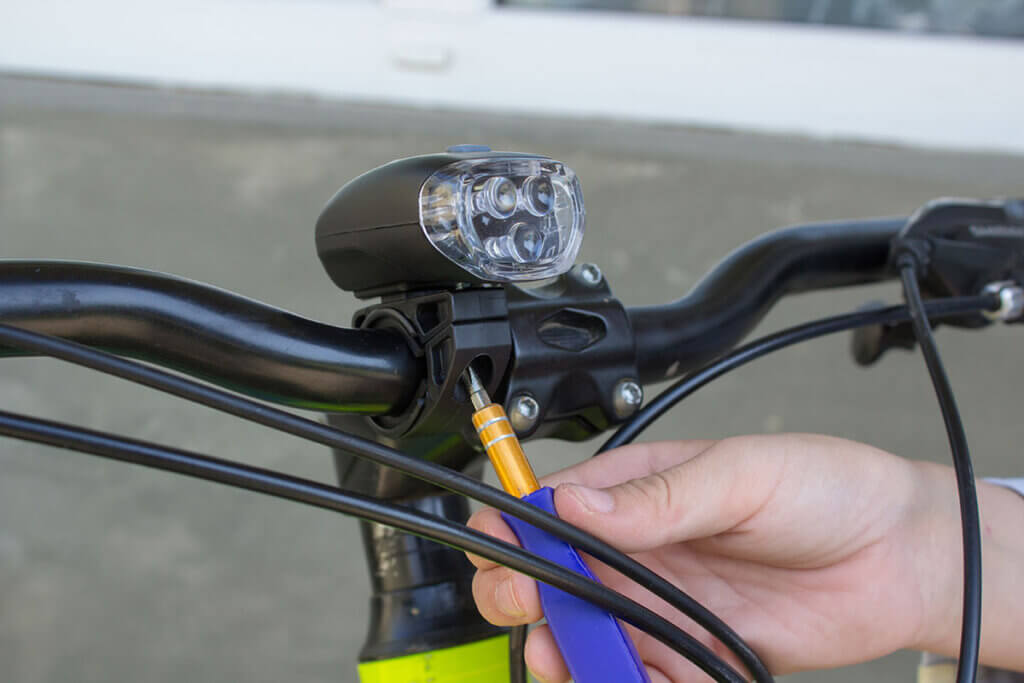
Notes on bike lights
After mounting, the bicycle light is immediately ready for use. Take this opportunity to check whether all the elements of a prescribed lighting system are present on your bike. It is also important to align the headlight so that it does not dazzle oncoming traffic.
Approval for road traffic
Only lights that have been approved by the Federal Motor Transport Authority may be fitted to bicycles. You can recognise the approval number by a wavy line followed by the capital letter K with some numbers. As a rule, only tested lights are sold. Anything that does not bear the approval mark may neither be sold nor used as bike light. This applies, for example, to flashing lights, which must not be mounted on the bicycle. However, they are permitted as additional lighting on a helmet or backpack.
What does complete lighting include?
What bike lights used in road traffic must look like is prescribed in detail by law. But even regardless of regulations, you should always ride with complete lighting for the sake of your own safety. The StVZO prescribes the following components of a bike light:
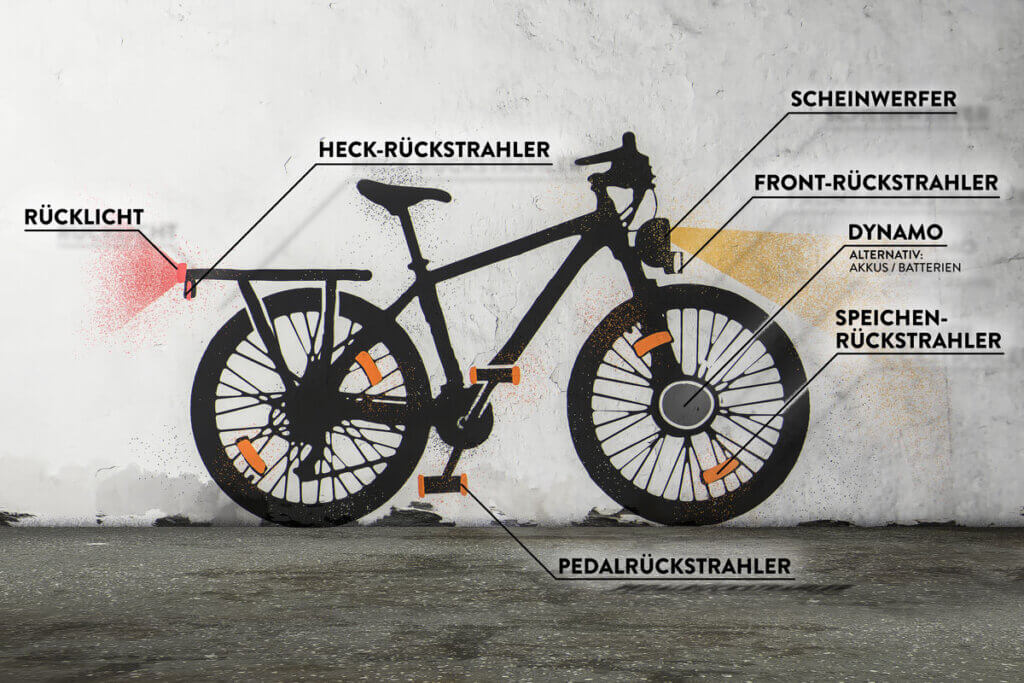
Correct setting of the bicycle light
Under no circumstances should the bike light dazzle oncoming road users. This is not only unpleasant, but can also be dangerous. To prevent this, correct adjustment and stable fixation are necessary. The most common mistake is to set the lamp too high. Then it illuminates the path very well, but dazzles oncoming traffic. The angle at which the light falls on the ground is decisive for the alignment. According to a regulation that is no longer valid, the light cone of the front headlight should hit the ground ten metres in front of the front wheel. You can continue to use this as a guide. The new regulation does not give precise details and merely states that the light must not dazzle oncoming traffic.

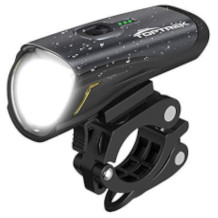
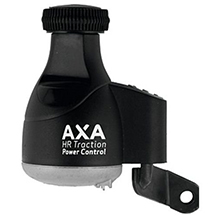
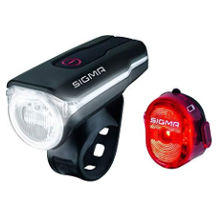
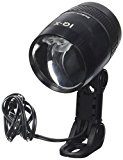
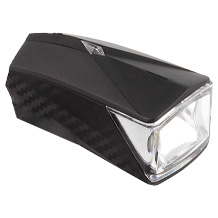
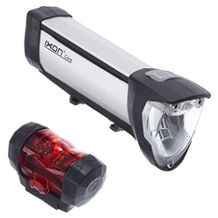
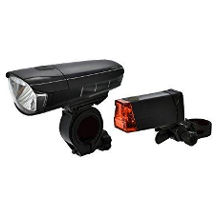
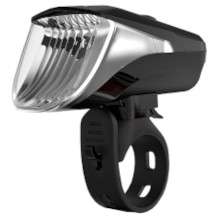
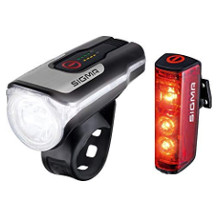
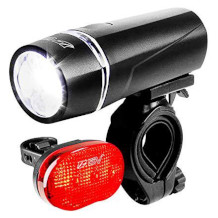
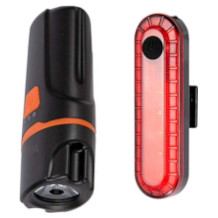
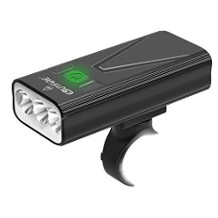

 673 reviews
673 reviews




